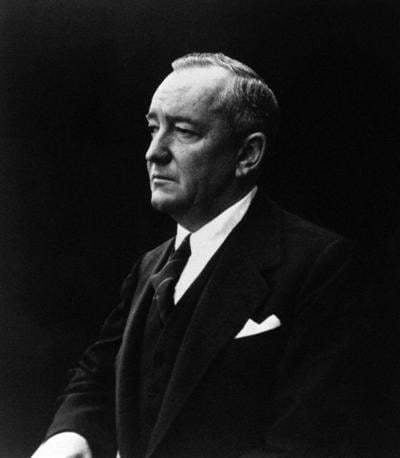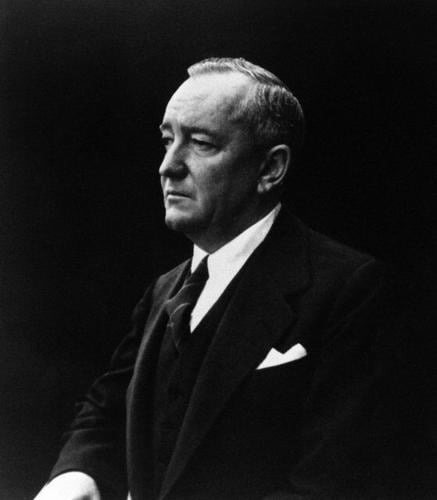TORONTO - News that Quebec auteur Denis Villeneuve will direct the next James Bond movie adds yet another Canadian tie to the blockbuster franchise about a British secret service hero.
The “Dune” visionary is set to take over the next iteration of 007 for Amazon MGM Studios with fellow Canadian and partner Tanya Lapointe serving as executive producer.
The film franchise sprang from a collection of post-Second World War spy novels by British writer and former naval officer Ian Fleming, who centred his adventures on a suave English operative with an affinity for martinis and a deadly faculty in eliminating threats.
But look closely and you’ll find several Canadian touches in the books and films. Here’s a look at 007 of them.
001 INTREPID
Bond is said to be at least partly inspired by Canadian spy and war hero Sir William Stephenson, whose clandestine activities admittedly make it hard to establish definitive ties.
But the Winnipeg-born Stephenson, who died in 1989, was a close friend of Fleming’s after the two met at a spy school the Canadian founded in Whitby, Ont., called Camp X.
Stephenson was code-named Intrepid during his mission days and his accomplishments rivalled that of any big-screen hero: lightweight boxing champion, First World War flying ace, millionaire inventor and entrepreneur, adviser to former U.S. president Franklin D. Roosevelt, confidante to former British prime minister Winston Churchill and chief of an elaborate British spy operation in New York.
Fleming has said he drew inspiration from multiple people he met throughout his wartime naval career. But, according to Dwight Hamilton’s book, “Inside Canadian Intelligence,” Fleming described Bond as “highly romanticized” while “the real thing, the man who became one of the great agents of the (Second World War), is William Stephenson.”
002 THE FILMS
The origins of the franchise can be traced back to Canadian theatre and film producer Harry Saltzman, who co-produced the movies until he sold his share to United Artists in 1975.
Saltzman was born in Sherbrooke, Que., in 1915, and entered the film business in the 1940s, according to a New York Times obituary.
He co-founded Eon Productions in Britain 1961 with Albert R. (Cubby) Broccoli, with whom he had bought the film rights to Fleming’s novels.
Lore has it that Saltzman and Broccoli cast Sean Connery as the star of their first film, 1962’s “Dr. No,” without a screen test, citing his “dark, cruel good looks” as a perfect match for Fleming's description of the hero.
Saltzman died in a Paris suburb in 1994 at age 78.
003 THE VILLAIN
The first Bond villain to grace the screen was played by Montreal-born Joseph Wiseman, whose turn as the eponymous evil genius in “Dr. No” helped set the stage for future outlandish malefactors.
Wiseman played the even-keeled Chinese-German scientist Julius No as a cool-tempered maniac in a Nehru jacket with shiny black prosthetic hands — his real hands explained away as the “cost” paid for failed radioactive experiments.
Born in 1918, Wiseman made a splash on Broadway in Sidney Kingsley's 1949 play "Detective Story," launching a film career marked by offbeat characters, according to a 2009 obituary in the Guardian.
His film career included 1951’s “Detective Story” with Kirk Douglas, 1952’s “Viva Zapata!” with Marlon Brando, and the 1974 Canadian film “The Apprenticeship of Duddy Kravitz,” opposite Richard Dreyfuss.
TV roles included Manny Weisbord in the ‘80s series “Crime Story.”
004 MONEYPENNY
Among the most constant characters to span the films is Miss Moneypenny, a relatively minor one afforded little development until recent films but nevertheless beloved by fans.
Canadian actress Lois Maxwell was the first to portray the character of the secretary to the head of the British Secret Service and Bond’s boss, M.
Maxwell was born Lois Ruth Hooker in Kitchener, Ont., in 1927 and, according to a CBC obituary, left home at age 15 to join the army.
She moved to Hollywood at 20, scoring a series of roles including “That Hagen Girl” with Shirley Temple and Ronald Reagan.
But it was the Bond role that made her famous. She appeared in 14 features between 1962 and 1985, including 1964’s “Goldfinger” and 1983’s “Octopussy,” according to IMDB and the James Bond Wiki.
Maxwell also starred in the CBC-TV series “Adventures in Rainbow Country” and in the 1980s, wrote a column in the Toronto Sun under the byline Miss Moneypenny.
005 THE SONG
There’s some intrigue behind how k.d. lang's song, "Surrender," came to close the 1997 film "Tomorrow Never Dies," in which Pierce Brosnan stars as the dapper operative.
The “Constant Craving” singer applied her velvety vocals to a well-received anthem co-written by Bond score composer David Arnold with David McAlmont and Don Black.
It was initially meant to be the main theme, but was famously passed over for Sheryl Crow’s eponymous title song at the last minute. In a look-back for the 25th anniversary of the movie in 2022, lang told Yahoo that the sudden change “was super disappointing to me because I thought I was doing the opening song.”
006 THE BOOKS
Fleming's 1962 novel "The Spy Who Loved Me" is narrated by a French-Canadian woman named Viv Michel, who recounts her story in a stylistic departure from previous books and was largely panned by critics.
Bond doesn’t even appear until more than halfway through the story, and Fleming reportedly disavowed it after publication as an experiment that had “obviously gone very much awry."
When he sold the film rights to Saltzman and Broccoli, they were allowed to use the title but nothing else, according to Eon Productions' Bond website .
Production on the resulting 1977 film “The Spy Who Loved Me” — starring Roger Moore as Bond — coincided with Saltzman selling his share of Eon and the film became the first to list Broccoli as sole producer.
007 THE GETAWAY
"The Spy Who Loved Me" features a dramatic ski chase in which Bond is being pursued by KGB agents when he comes upon a cliff face, and leaps off the mountain, escaping near-death with the help of a parachute.
The sequence was partly shot on Baffin Island, where harsh weather conditions forced the crew to wait 10 days to attempt a jump off Mount Asgard in Auyuittuq National Park, according to .
When the clouds finally parted, the team had just 15 minutes to capture the stunt.
“We were in this very desolate part of the world, inside the Arctic Circle with an Inuit village about 30 miles away," said John Glen, second-unit director.
"Each day, we had to travel by helicopter to set up the climbing pylons so the crew could get up there with the cameras. The weather was atrocious.”
This report by The Canadian Press was first published June 27, 2025.


